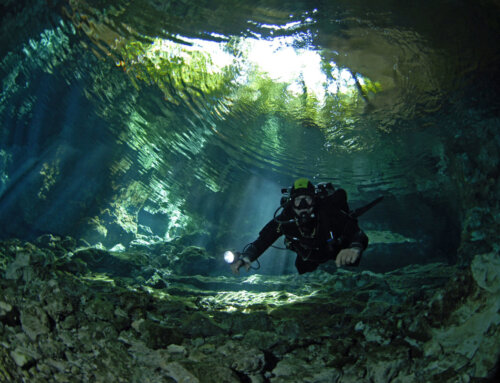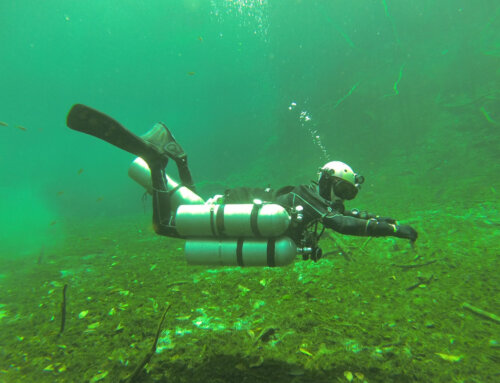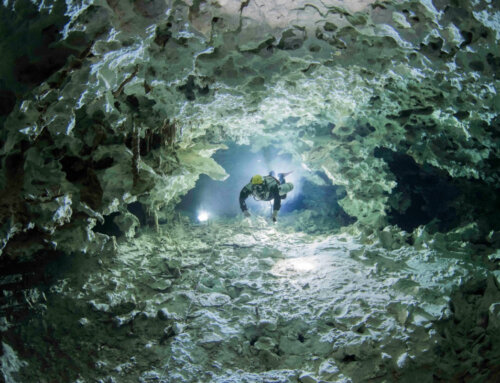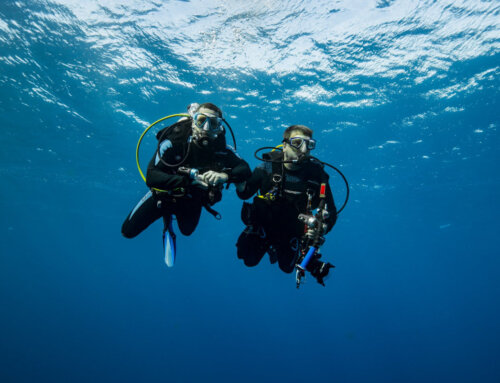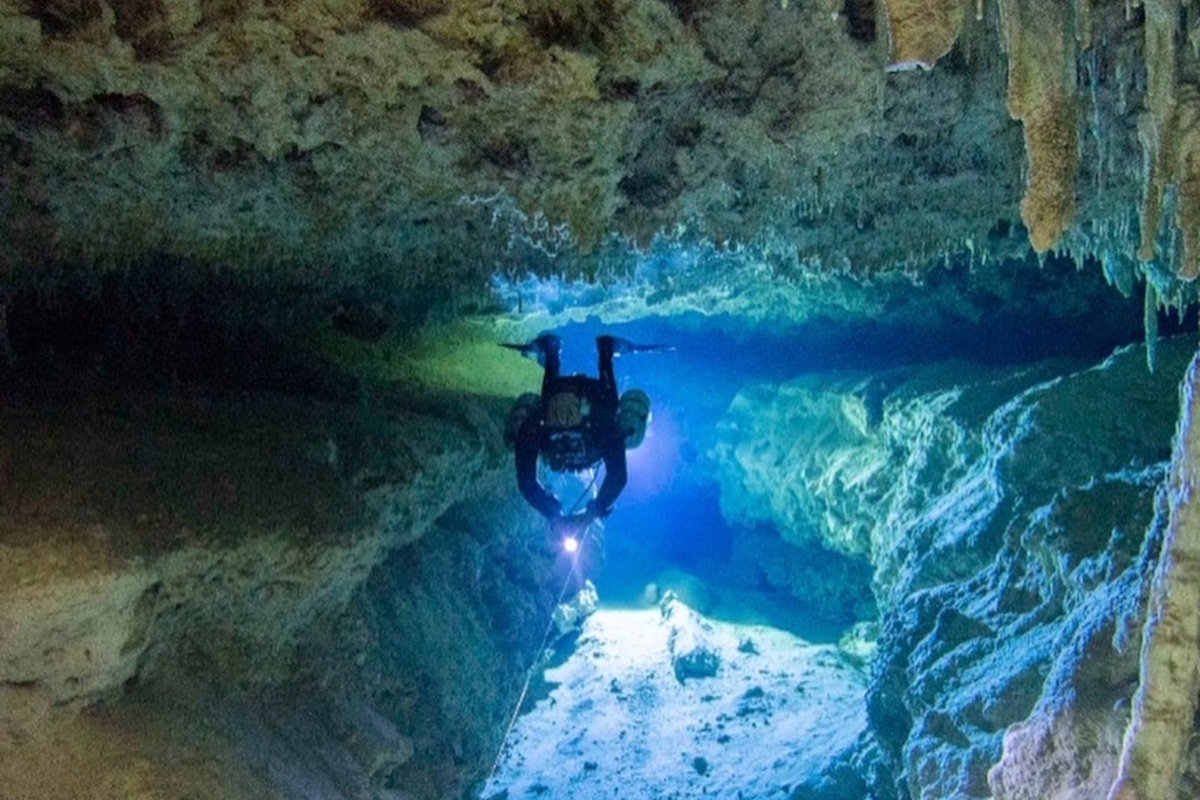
Sidemount diving
Sidemount diving has gained lot of popularity in recent years. In this kind of scuba diving, instead of wearing a traditional back-mounted scuba cylinders, sidemount divers wear their tanks on their sides, connected with a short leash+clip at the level of the waist and with a bungee cord on the topside, keeping the vales under the armpit. This configuration has many advantages, making it a popular choice for recreational and technical divers alike.
One of the main pros of sidemount diving is its flexibility. With tanks mounted on both sides, divers can easily adjust their buoyancy and trim to suit their individual needs. This is a perfect choice for overhead environments such caves and wrecks where space may be limited and maneuverability is key. By moving tanks to their sides, divers can also reduce their profile , making it easier to navigate through narrow passages.
Sidemount diving is also beneficial for divers with physical limitations. Traditional back-mounted tanks can put a strain on the back and shoulders, making it difficult for some divers to carry and maneuver their equipment. With sidemount diving, tanks can be removed and carried separately, allowing divers to easily manage the weight and distribute it evenly between both sides of the body. This makes sidemount diving a great option for those with back or shoulder injuries, or for divers who prefer a more comfortable and customized fit.
Another advantage of sidemount diving is that it allows for easier access to tanks and equipment. Divers can easily reach their tanks and regulators without having to twist and turn their bodies, which can be especially important in emergencies. This makes sidemount diving a popular choice for technical divers who need to quickly access their equipment in challenging environments.
To get started with sidemount diving, divers will need to invest in specialized equipment. This typically includes sidemount harnessesand wings, which are designed to secure tanks and provide a comfortable fit, as well as regulators and gauges that can be easily mounted on the tanks, best election is having first stages with rotating turrets. Divers will also need to adjust their diving techniques to accommodate the new configuration, including adjusting their buoyancy and trim and learning how to manage gas and emergencies.
While sidemount diving has many advantages, it is important to note that it is not suitable for every type of dive. It must be considered a tool. It is generally recommended for dives that require a high degree of maneuverability and access to equipment, such as cave diving, wreck diving, and technical diving. For recreational dives, traditional back-mounted tanks may still be the best option for many divers, but even in this, lot of sidemount recreational divers are founded on diving tours.You may need to approach to a specialized dive center like plutodive
(www.plutodive.com).
In addition to the specialized equipment and training required, sidemount diving also comes with some potential risks. Divers need to be aware of the potential for entanglement and ensure that their equipment is properly secured and streamlined. They also need to be aware of the potential for gas management issues, as cylinders will be separated and in need to regulator switches to maintain the correct amount of gas during the dive. In conclusion, sidemount diving is a popular and flexible scuba diving configuration that offers many benefits for divers. As with any new diving configuration, proper training and equipment are essential for a safe and enjoyable experience.
We in our facility PutoDive are specialized it this scuba diving activity and can provide professional training.
